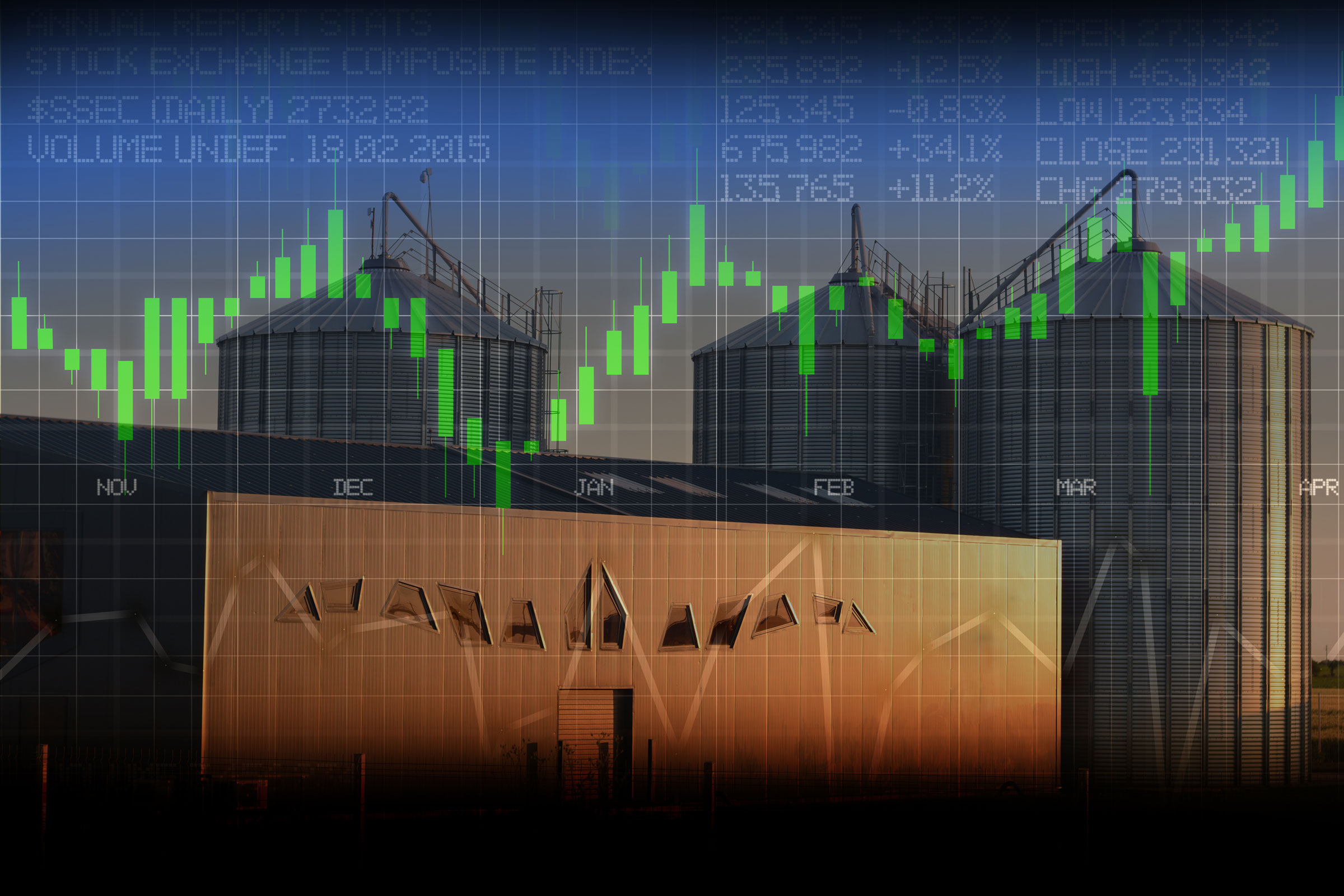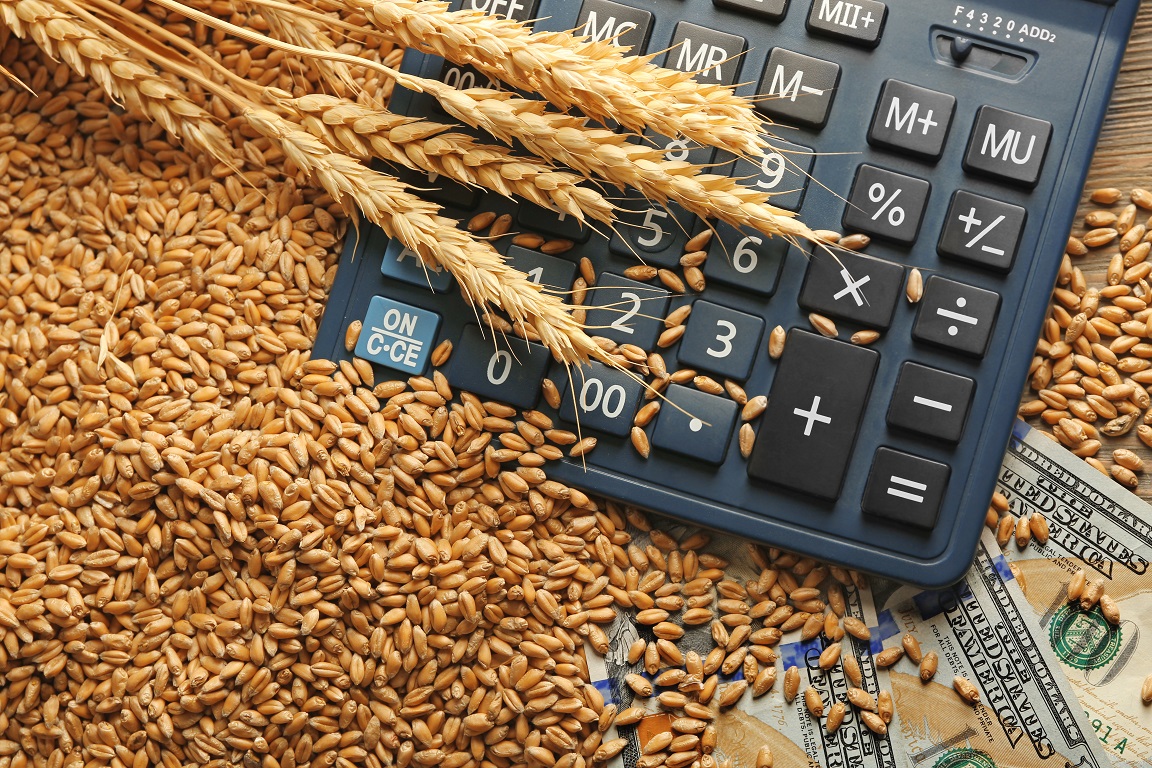- Published On: June 17, 2021
- Author: AgriSecure
Organic soybean prices are skyrocketing. The Jacobsen reported that prices were up to $32 per bushel in the Midwest in May 2021. What’s behind this impact on organic crop prices? And why aren’t organic corn premiums keeping up?
In short: it’s all about supply and demand, especially imports, says David Becker.
David is an analyst at The Jacobsen, a Fastmarkets price reporting agency that specializes in the less than transparent agriculture and energy sectors. With more than three decades in the capital markets, he’s been following the organic and non-GMO markets since 2014. We spoke with David about the factors that have an impact on organic crop prices.
Why organic soybeans are outpacing corn
Let’s start with the current situation. Commodities are rising and organic soybean premiums are strong. But organic corn prices are not moving up as quickly as conventional corn. Why is this?
It boils down to imports, particularly those from India. Domestic production of organic corn is much higher than organic soybeans: only 20% of organic corn is imported, compared to 70% of organic soybean and soybean meal. And our biggest contributor of organic soybean meal is India.
But India isn’t contributing as much this year due to several factors. The first is COVID, which caused shipping rates to rise substantially. In October 2020, shipping from India to the U.S. was $90 per metric ton. Now it’s around $250.
India also had an issue with certification. The European Union rejected a number of organic soybean and soybean meal shipments from the country. This eventually led to crackdowns on the two Indian companies that allowed the shipments to go through. Several farmers and processors lost their certifications.
Then a group of U.S. organic soybean meal processors filed an anti-dumping lawsuit against India. If the International Trade Association rules in favor of the processors, David expects a 158% maximum duty on organic soybean meal. Given that 90% of our organic soybean meal imports come from India, that would essentially cut off our imported supply. “Nobody is going to pay the elevated price, plus 158% duty,” he says.
Organic soybean meal imports are already way down compared to last year. “That has led to a price spike in organic soybeans and soybean meal,” David says. At the same time, “there’s not much of an interest to push up the price of organic corn because there’s enough around.”
How commodities create impact on organic crop prices
The truth is, commodities don’t influence the organic market. At least not directly.
David says what happens is when conventional prices in the U.S. go up, they tend to go up globally. Since we import commodities from places like Argentina and Ukraine, higher conventional prices make those crops more competitive to organic. If the gap is small enough, farmers in those countries will decide to grow conventional instead. That leads to fewer organic imports, which indirectly pushes up organic prices.
The same thing also happens in the U.S. David says there’s a level where newer organic farmers may decide it’s not worth it to go for $8.50 organic corn when they can sell conventional corn at $7.50.
“If it becomes less attractive, what will eventually happen is fewer farmers will produce organic crops,” he says. “If demand still continues to rise — and it’s rising — you’ll eventually get a lift in organic prices. But that takes a cycle or two to occur. It doesn’t just happen with the move upward in conventional prices.”
What are other reasons we’ll see an impact on organic markets going forward?
If there’s a duty on imports of organic soybean meal from India, it will have an immediate impact on organic crop prices. If that happens, David says prices will shoot even higher and two things can occur.
The first is that organic animal feed buyers may choose another protein source, like sunflower, canola or peas, instead of soybeans. But if they decide to stick with organic soybeans, that could cause soybean prices to rise to a level where they’re competing with organic corn in terms of potential revenue.
David says most organic farmers can raise a 150-bushel yield corn crop. At a $9 per bushel premium, the revenue is $1,350 per acre. Whereas organic soybeans may only yield 38 bushels per acre. So even at $29 per bushel, the revenue is about $250 less. But as organic soybean prices rise, they may become more profitable than organic corn.
“If I were a farmer and I had the capability of planting organic soybeans and growing at a better clip than 38 bushels per acre,” David says. “I would probably feel confident there’s been a change in the dynamic between what’s available outside the U.S. that’s coming into the U.S., and would focus on the organic soybeans as a way of making money.”
What about fraudulent grain? Does that have an impact on organic crop prices?
When the EU rejected those Indian shipments, the U.S. jumped in too. This resulted in fewer shipments from India to the U.S., and as a result prices rose. But in general, David doesn’t believe fraudulent grain plays too much of a role on prices.
“There’s always some fraudulent imports or domestic organic grain,” he says. “But the market takes care of itself.”
While the new Strengthening Organic Enforcement rule will help the National Organic Program better track organic grain to prevent fraud, David doesn’t think that will make too much of an impact on organic crop prices moving forward.
Pro tip: Keep an eye on the Federal Reserve
David says a lot of this is predicated on the economy and growers pay attention to it.
Prices are increasing in almost every aspect of the market: gasoline, housing, wages. But we haven’t seen prices for organic animal proteins like eggs increase yet. It’s only a matter of time until they do.
“That’s really a function of the entire market, the Federal Reserve monetary policy, the stimulus we have and people getting checks,” David says. “So farmers should understand this is a good time for grain prices. But the good times are predicated on what’s going on in our economy.”
He speculates that when the stimulus ends and the Federal Reserve starts to raise rates again, demand might decline.
“That’s when all this will unwind and prices will start to go back down again,” he says. “So just keep an eye on the Federal Reserve, that’s what I would give anybody advice to do.”
For more insights from David on the organic markets or to learn more about The Jacobsen, visit www.thejacobsen.com.
Get expert guidance for your marketing
Marketing organics is not like commodities. There’s a wide range of situation that can have an impact on organic prices, and it can take a lot of time and resources to find the best opportunities for your crops.
That’s why AgriSecure created its Organic Grain Marketing service. With our market insights and access to buyers, we’ll help you manage risk, capture upside and create long-term profitability. Contact grain marketing expert Dahn Clemens to learn how AgriSecure can help you raise your marketing game. Send him an email, schedule a call or dial direct at 402-651-0237.
Related Articles
-
New Options Offer Farm Loans for Organic Transition
If securing farm loans for organic transition feels daunting, we have some good news. It’s not as hard as it used to be. In fact, there’s a number of new options that could provide a solution for you and your operation. Traditional lenders, farmland investors, non-profits, and even big food companies are starting to create […]
-
Organic Farming Loans Support Growers during Transition
Ask a farmer what’s keeping them from transitioning to organic row crops, and you may be surprised to hear a common answer. Finances. It’s often a struggle to find organic farming loans tailored to their needs. Yes, organics offer excellent premiums and can bring long-term profitability. But first you have to get through the 36-month […]
-
Organic Breakevens: What to Know and How to Calculate
If you’re thinking about organics, you’ve probably debated whether it’s going to pay off — literally. Yes, the price premiums are good, but you’ve heard your yields will take a hit. How can you predict profitability? The answer: calculating your organic breakevens. What are an organic breakevens? Simply put, it’s a way to calculate what […]
-
Know Your Numbers to Push Crop Profitability
Yield is often the top priority in farming. The truth, though, is that the highest yields will not necessarily result in the highest ROI. And this is especially the case for organic production. We know good execution results in the best yields, but the best way to maximize your crop profitability is to know your […]
-
6 Ways to Protect Organic Profits in Uncertain Times
Economic uncertainty hits all sectors of the agriculture industry, including organics. The good news? It’s possible to safeguard your organic profits. For a start, it’s even more important for organic farmers to focus on executing their operations really well. The better the execution, the better you can weather the market conditions and remain profitable. Here […]
-
5 Steps for Financing the Transition to Organics
Profits. They’re one of the primary reasons farmers decide to move into organic production. Financing the transition to organics, though, can be one of your biggest hurdles. That’s why the support of a banker or ag lender can be a lifeline for farmers looking to get into organics. The right backing helps you build an […]
-
4 Keys to a Strong Organic Fertilizer Strategy
Questions about an organic fertilizer strategy are common in organic farming. How do I provide enough nutrients? In particular, nitrogen. How do I manage my crop and soil without using synthetic fertilizers? Fertilizer can come from a variety of organic sources, including animal waste, decomposing plants, and nitrogen-fixing crops like soybeans and clover. So it’s […]
-
Consider Organic Farming? Yes.
With so much economic uncertainty caused by the COVID-19 pandemic, you may be wondering: Is now the right time to transition into organic crop production? Is this the right time to increase the number of organic acres you’re already farming? My answer, yes. Current market conditions, falling commodity prices for conventional crops and somewhat lower […]
-
80 Million Millennials Can’t Be Wrong: Farmer Panel
80 million millennials are a part of the driving force behind the rapid growth of organic food demand. So why aren’t more farmers transitioning into a system that sees premiums of 2x over conventional and profitable margins? In a panel that took place at FBN’s Farmer2Farmer V event, AgriSecure co-founder and organic farmer Bryce Irlbeck […]
-
The Impact of COVID-19 on Organics Marketing
With COVID-19 causing conventional corn and soybean prices to fall, organic farmers may be wondering how the pandemic is going to affect their marketing plans. Currently, organic corn prices are down because of strong production in 2019 and higher imports. Prices for organic soybeans, on the other hand, have risen due to a decrease in […]
Get in the know
Our newsletter, it’s a quick read. You’ll get industry news plus all the latest organic insights. Who doesn’t want that?











